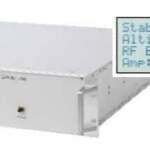
Summit Communications | Satellite 2019 show
05/04/2019
Altimeter and Flight Simulator Solutions
05/26/2021One of the main critical components of RF Over Fiber deployments is the quality of the fiber cable. Fiber cable typically introduces 0.25 dBo or lower optical loss per kilometer. If there is direct fiber run between the Tx and Rx modules, typically deployment would go smooth.
However, if there are patch panels on the fiber link, the optical link budget and/or Rf link budget might get negatively affected. Since there are 2 connectors on the patch panels for connecting the 2 legs of a fiber run, the patch panel would introduce a loss of 0.5dBo or lower since typically each connector introduces 0.25 dBo loss or lower.
If a RFoF link has to be established between two control rooms that are in two different buildings, there might be several patch panels on the link. There would be one patch panel at the I/O point of each control room. Further, there might be one more at the I/O point of the building. So, in total there might be 2 or more fiber patch panels.
In an optical connection the cleanliness of the connectors is very important. Smallest dirt can introduce several dB optical losses. Since patch panels are deployed with a “deploy and forget” approach, they may not be as clean as they should be.
As RFoF is a coax replacement solution, it is sometimes deployed with technicians that are more familiar with coax cables rather than the optical links. After a technician has deployed the RFoF Tx and Rx modules and connected the RF signal to the Tx module, if they do not see the expected RF output at the Rx module, there is a tendency to call the RFoF vendor and say that the modules are defective. Since the technicians topically lack the optical tools on site to diagnose the problem, the deployment is delayed until they acquire the necessary troubleshooting tools. More often than not the RFoF modules are shipped back to the manufacturer for diagnostic purposes.
To make the deployment process more efficient and to help technicians troubleshoot such problems, RFOptic developed a feature for RFoF Tx and Rx modules to report the optical power levels. When a technician connects to the Tx or Rx module (through Ethernet of USB), they can easily see the output and the input optical power levels. If there is too much difference, the technician can conclude that there is an issue with the fiber cable and troubleshoot accordingly. If there are multiple legs in the fiber run, the technician can even determine where the problem is occurring by moving the Rx module to different connection points on the fiber run and checking the optical power level received by the Rx module. See the screenshot.
For more info on programmable RFoF links up to 6 GHz https://rfoptic.com/rf-fiber-6ghz/

